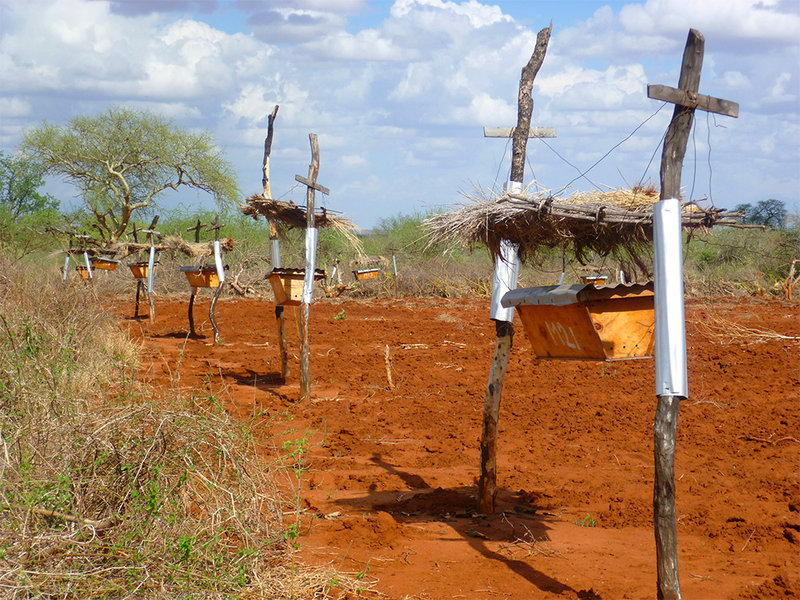Back to August 2016 Newsletter
Elephants and Bees

Kim Fellows
Dr. King is a research associate at Oxford University, UK, and the head of the Human-Elephant Co-Existence Program, Save the Elephants, in Kenya. She shared that there is a relatively stable elephant population in Kenya, but due to habitat fragmentation and civil development, elephants are forced out of their habitats, and cause a lot of destruction on farms by raiding crops. Electric fences are sometimes used as a barrier, but Dr. King didn't want to incur the expense of this solution in Kenya, and she showed us videos of clever elephants who slide on their bellies under gaps in the fences! She needed to find a way to address the social, political, economic and conservation problems raised by the interactions between farmers and elephants.
The solution arrived via honey bees. In Africa, most honey bees are wild. Elephants don't like bees and have inherent fears and responses to them. Dr. King decided to take advantage of this fact. She recorded the sound of angry African honey bees and played it back through a fake tree trunk in the vicinity of elephants. The behavioral discoveries were groundbreaking: not only do elephants run away from angry bee sounds, but they also emit a unique low frequency rumble that warns other elephants in the area to retreat. Apparently, these rumbles are exclusive to the bee threat, and sound different than rumbles warning about human threat.
The bee-sound experiment led Dr. King to develop "Beehive Fences" around farms, in which hives with live bees and dummy hives are hung every ten meters. The hives are linked together, so that if an elephant touches one of the hives or interconnecting wires, beehives all along the fence swing and release the bees. They have also discovered that wild bees will occupy the manmade hives, especially during the rainy season.
The Beehive Fences have an 80% success rate, along with several spinoff benefits:
- The farmers receive additional income through the sale of "Elephant-Friendly Honey" and other products;
- The farmers increase their crop yields due to the potential increase in pollination services from the occupied hives, and because fewer elephants are raiding their crops and causing damage;
- Farmers and their families experience less stress and trauma from defending their crops against the elephants; and
- Fewer elephants are injured or killed as a result of crop-raiding.
You can find out more by visiting elephantsandbees.com, and should you ever find elephants in your garden, Dr. King has even provided a Beehive Fence Construction Manual.
**
Kim Fellows is the Outreach Coordinator for Pollination Canada. She is grateful to a TD FEF Leadership Grant that allowed her to travel to this conference in 2016.
Photo: Beehive Fences. Human-Elephant Co-Existence Program, Elephants and Bees Project, Save the Elephants
Not yet a member?
An annual membership to Seeds of Diversity gives you access to our seed exchange, seed grow-out programs, and our online news.

We depend on donations to do our work.

Thank you for your support!
